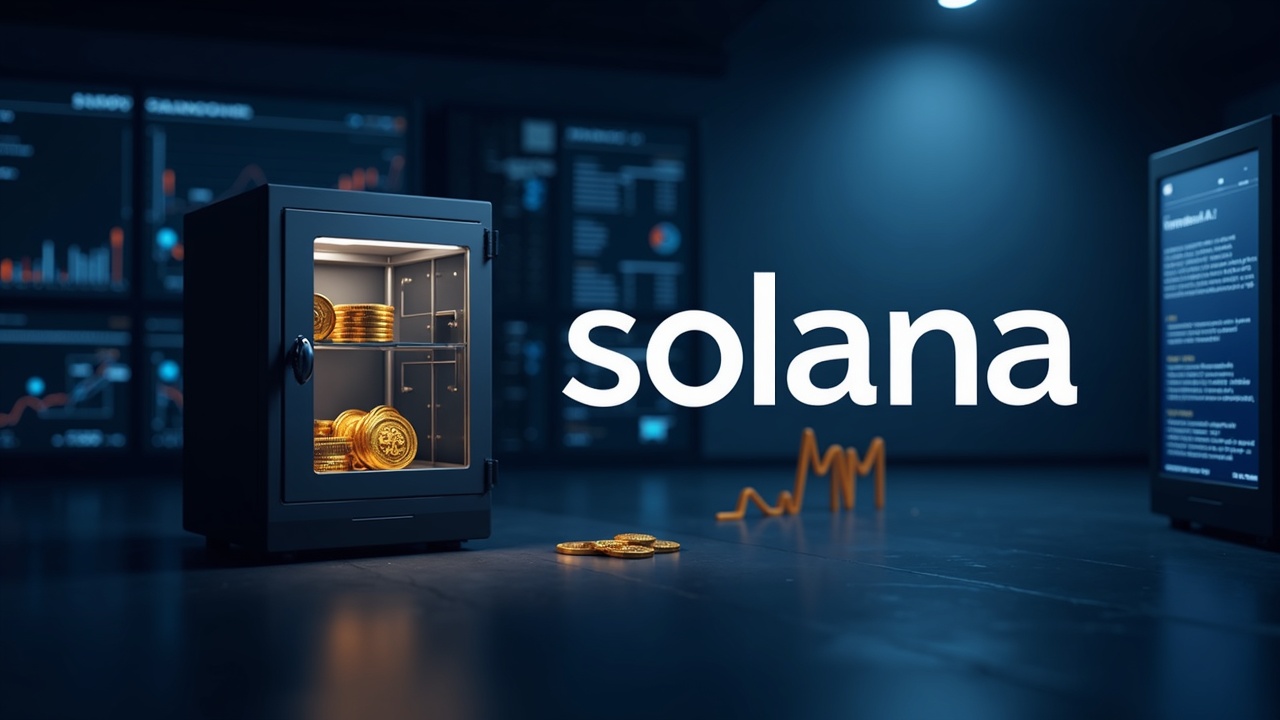Solana Company, formerly known as Helius Medical Technologies (NASDAQ: HSDT), has undertaken a radical corporate transformation, pivoting from medical devices to becoming a dedicated Solana (SOL) treasury fund. This high-conviction bet on digital assets has positioned the company at the intersection of innovative crypto strategy and severe stock market volatility.
A Strategic Pivot to Digital Assets
The company has fundamentally reinvented its business model. It no longer operates in the medical device space and now functions as a specialized vehicle for public market investors to gain exposure to Solana. As part of this strategy, Solana Company has placed a treasury of 2.2 million SOL tokens, valued at approximately $396 million, with Anchorage Digital Bank, the only federally chartered crypto bank in the U.S., for secure custody.
To generate yield from its substantial holdings, the company stakes its SOL tokens with large, established validators on the network, including Twinstake and Helius, both of which are ranked among the top 25 validators on Solana. The stated goal is to maximize the amount of SOL per share by leveraging opportunities in capital markets and on-chain activity.
Navigating Market Turbulence and Dilution
Despite its strategic positioning in the crypto space, Solana Company’s stock (HSDT) has experienced a dramatic and severe downturn. As of October 23, 2025, its stock price was $6.87, reflecting a staggering decline of over 96% from its six-month high of $182.75.
This plunge was exacerbated by a dilutive financing event. A private offering aimed at raising $500 million to purchase more SOL backfired when the locked-up shares from the deal hit the public market, triggering a further 22% drop in the stock price. This has placed significant strain on existing shareholders, even as executive leadership like Chairman Joseph Chee has expressed public conviction in the long-term strategy, stating that “volatility creates opportunity”.

Weighing the Opportunity Against the Risks
The company’s bull case is built on the strengths of the Solana network itself. Solana is designed for high throughput, capable of processing over 65,000 transactions per second with block finality times as low as 100-150 milliseconds. By staking its tokens, the company earns staking rewards, which can provide a yield on its assets.
However, this strategy is not without significant risks. Critics point to concentration concerns within the Solana network, where the top 25 validators hold a substantial portion of the total stake. More fundamentally, the company’s balance sheet is now directly tied to the price of SOL. Swapping its cash reserves for the cryptocurrency has eliminated a traditional financial buffer, making the company’s value highly susceptible to market fluctuations in the crypto asset.
In summary, Solana Company represents a bold, real-world experiment in corporate treasury management. Its future now hinges on the dual performance of its strategic SOL holdings and the market’s perception of its stock, a test of whether its crypto-centric model can ultimately achieve stability and growth.


